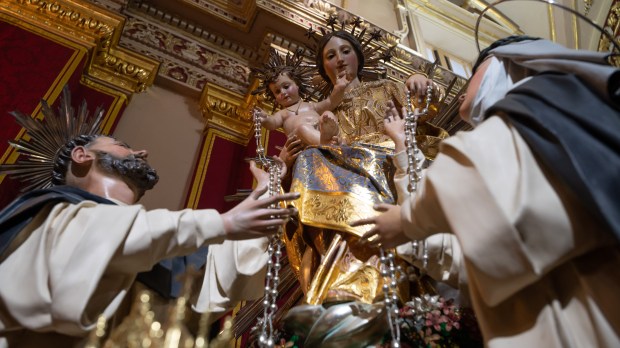“Marsaxlokk” is derived from the Maltese words meaning South-East (xlokk) and harbor (Marsa). Marsaxlokk Bay has been the scene of great events in the history of Malta: the building and destruction of the Juno Temple; the discovery of two marble Cippæ which provided the key to the deciphering of the Carthaginian alphabet; the arrival of the Turkish Armada and landfall of thousands of Osmanli military who took part in the Great Siege; the arrival of the French under Napoleon, and, in more recent years, the Bush-Gorbachev meeting. These were all events that radically changed history in Malta and even had international repercussions.
After the Grand Harbour and Marsamxett Harbour, the next most important is that of Marsaxlokk, the East side dominated by Tas-Silġ Hill. This hill derives its name from a chapel built by the Discalded Carmelites and dedicated to Our Lady under the title “Ad Nives” (Our Lady of the Snows – in Maltese Madonna Tas-Silġ). Today’s Chapel of Our Lady of the Snows was built in 1833 replacing an older one, dating to 1650. Before the building of the chapel, the locality was known as Il-Kasar. However, the female cult in Il-Kasar did not begin with this chapel, as it goes back thousands of years. From c. 3000 B.C.,it was considered a sacred site, witnessing the worship of a succession of female deities, as evidenced by the remains of their ancient temples – goddess of fertility (Copper and Bronze Ages); Astarte (Phoenician); and Juno (Roman). Indeed, this area is one of the most ancient religious sites in Malta. The chapel is about one hundred meters away from the temple area.
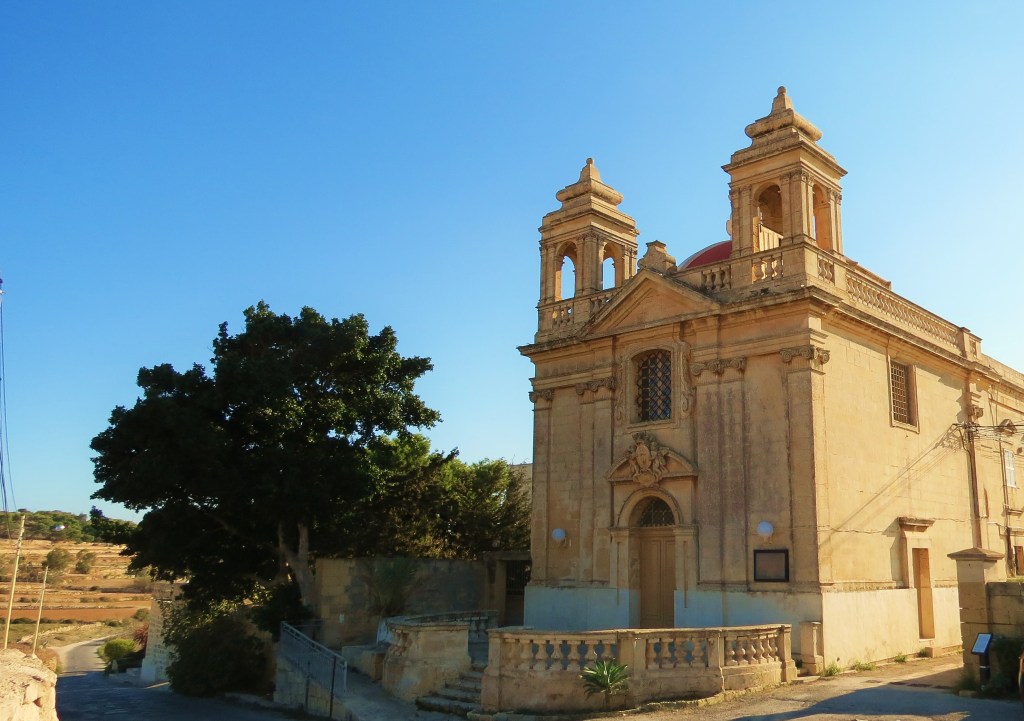
In Roman times, the hallowed place became an international religious complex dedicated to the goddess Juno. Located on the maritime routes plied by mariners and traders, its fame did not escape the attention of the first century BC Roman orator Cicero. In 70 B.C. he levelled accusations at Caius Verres, the governor of Sicily, regarding numerous offences. Among other crimes, Cicero accused Verres of despoiling Juno’s Temple of its treasures, and of having turned Melite into one whole textiles factory, producing women’s clothing for his own personal gain.
5th-Century Christian Basilica
Today, only some traces of the pagan temples and the remains of a 5th-century Byzantine Basilica, possibly dedicated to the Theotokos, endure. In the 5th century AD, the Orthodox Byzantines erected a Basilica at the Tas-Silġ site. It is very probable that the ancient and deep Marian devotion in Malta also stems from the Byzantine occupation between the fifth and ninth centuries AD. The name “basilica” began to be applied to Christian churches towards the beginning of the fourth century AD. Before that, they were referred to as houses of prayer, oratories, or house of God, apart from the common name “ecclesia” (church).
The remains show that the Byzantine basilica was built on part of the pagan temple which existed at Tas-Silġ. The baptistry was the first object to be excavated, making it the first sure sign of a place of Christian worship at Marsaxlokk. The discovery of the baptistry was significant to the history of the church in Malta, for it is the oldest one discovered, at least to date. After, other remains were excavated, which gave a precise indication of the layout, the alterations made by the Christians to transform the pagan temple into a place of Christian worship, and the use made of the same stones. The exact spot of the altar was also identified. It is no easy task to ascertain to whom the Basilica was dedicated. However, since devotion to Our Lady has existed from the earliest times of Christianity, and given it was a Byzantine edifice, it is quite possible it was dedicated to the Theotokos (God Bearer). In fact, the period when it was built, the fifth century AD, coincides with the Council of Ephesus, the third Ecumenical council in 431, during which the title of Theotokos for the Mother of Christ was avowed. Also, during the same age the Byzantines erected churches such as Panagia Theotokos, a major Marian Basilica in Thessaloniki, Greece, dedicated to the God Bearer.
It is a historical fact, proved by impeachable documentary and architectural evidence, that special and intensive devotion to the Blessed Virgin was one of the chief characteristics of the Christian Orthodox Church. Therefore, it was only natural that pagan temples were turned into Christian places of worship. It is also a historical fact that once the Christian Church became the established religion of the Roman Empire, it reconsecrated pagan temples in honor of its saints, martyrs, and the Blessed Virgin. Generally, temples that were dedicated to female pagan deities were then dedicated to the Virgin Mary under various titles. Surrounding the courtyard of Juno’s temple, the Christians also built a Byzantine monastery with rooms leading into the courtyard.
It is most likely that the Byzantine basilica was destroyed by the Arabs in AD 870 when they took over the Maltese Islands from the Byzantines. Evidence to this is that Tas-Silġ is full of traces of fire and destruction. The Arabs must have built a mosque for themselves, since archaeologists have also found a niche facing Mecca.
The Hardships of Marsaxlokk
During the Aragonese rule and the first years of the Knights of Saint John, the Maltese were afraid to build their homes in the vicinity of the coastline due to the frequent raids of Muslim corsairs. In those times, the only three locations which were fortified and in which the Maltese could take shelter were Mdina, Fort Saint Angelo in Birgu and the Citadel in Gozo. Every time the people of Żejtun sensed an attack, they took refuge in Birgu, which, sometimes, was too crowded to take them all in. Many Maltese were also taken into slavery in North Africa. The hamlet of Marsaxlokk became practically uninhabited. In 1610, Grandmaster Alf de Wignacourt built the San Lucian Tower to defend the entrance to Marsaxlokk Harbour. This tower prevented the enemy from landing in 1614, however, they still penetrated through Saint Thomas Bay and Marsascala.
Other defenses were added for the better protection of Marsaxlokk. This explains why it took so long for Marsaxlokk to develop, and why since 1450, the areas of Marsaxlokk were part of the Żejtun Parish of Saint Catherine of Alexandria. By the second half of the 18th century, Malta was so well fortified that fear of attacks from corsairs no longer existed. Additionally, the inhabitants of Mediterranean countries began to realize how much better it was for them to develop peaceful commercial ties rather than live off piracy. In the 1800s, people started to move to Marsaxlokk again.
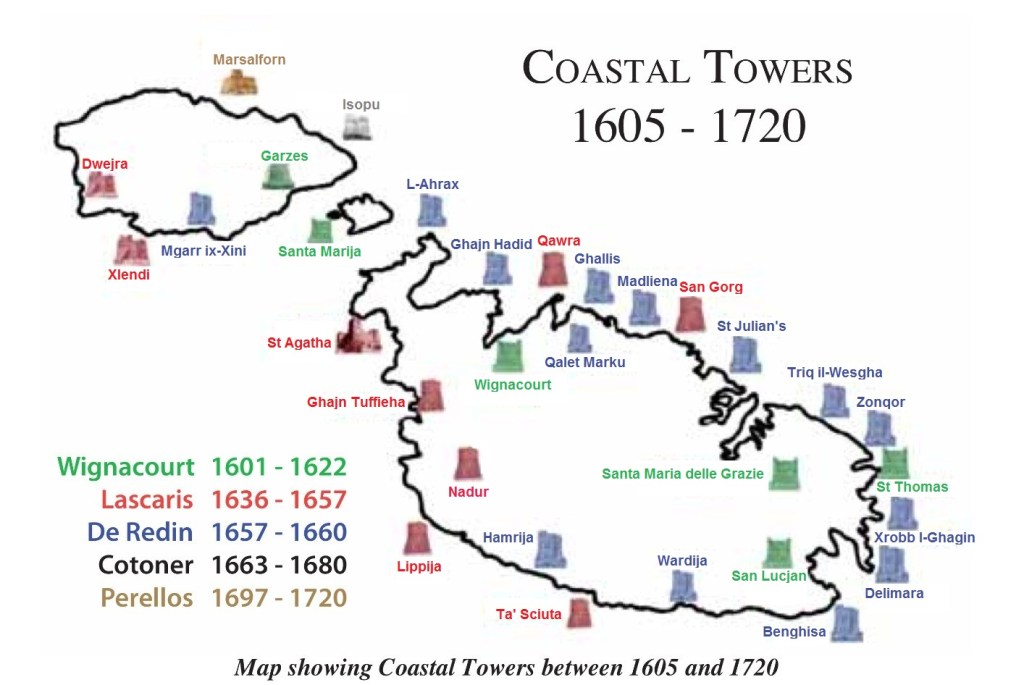
Records show that in 1887, Marsaxlokk consisted of some 40 families of fishermen and farmers, but it had not yet become a popular summer resort as had already happened in places like Sliema, Saint Julian’s, and Saint Paul’s Bay. About 200 persons living in the hamlet were facing financial hardships. Fishermen did not have the facilities of mechanized means that exist today. There were no cold stores. Families lived from hand to mouth. Life at sea had its dangers and many fishermen lost their lives. Several villagers earned their living through farming, but the land did not produce enough for them to live on. Additionally, the export of cotton had almost come to an end. Notwithstanding, the villagers were very religious and fervent Christians, always ready to attend to their spiritual duties although they lived a long way from their parish church, which, at the time, was still the Church of Saint Catherine of Alexandria in Żejtun.
Our Lady embraces Marsaxlokk through Pompeii
At the time, Marsaxlokk already had a few chapels, namely those dedicated to Our Lady of the Snows, Saint Nicholas, Saint Peter the Martyr (privately-owned), Saint Domenica and Saint Dominic, but these were too small and too distant from the inhabited areas. Another three were on the periphery of Marsaxlokk, dedicated to Saint George, Saint Paul, and Mary Help of Christians. The villagers became convinced that Marsaxlokk had developed enough to have its own church, and hence unanimously agreed to refer their case to the Curia. However, they were perfectly aware of their meagre financial situation and that their donations would never suffice to build a church, nevertheless, they didn’t give up. Providence was round the corner!
The first decision to build the church was taken by Mgr. Antonio Buhagiar, Apostolic Administrator of the Maltese Diocese. In fact, when Mgr. Pietro Pace (also Archbishop of Rhodes) was appointed Bishop of Malta, in 1889, he was already aware that the village of Marsaxlokk needed its own church and should be separated from the parish of Żejtun.
Reasonably, before this could happen, it was critical to find a suitable and central site in the village where to build a large enough church. So, the same Pace set up a commission headed by the archpriest of Żejtun, Dun Anton Psaila. The results were good, the Noble Żammit Gauci family of Żebbug donated a plot of land in a perfect location, while the Parish Priest of Qala, Gozo, Don Ġużepp Diacono, offered to make the designs of the new church.
But this was not all; grace kept flowing. As the Scottish novelist and physician, Archibald Joseph Cronin wrote, “We cannot measure Divine Providence by the yardstick of human mentality.”
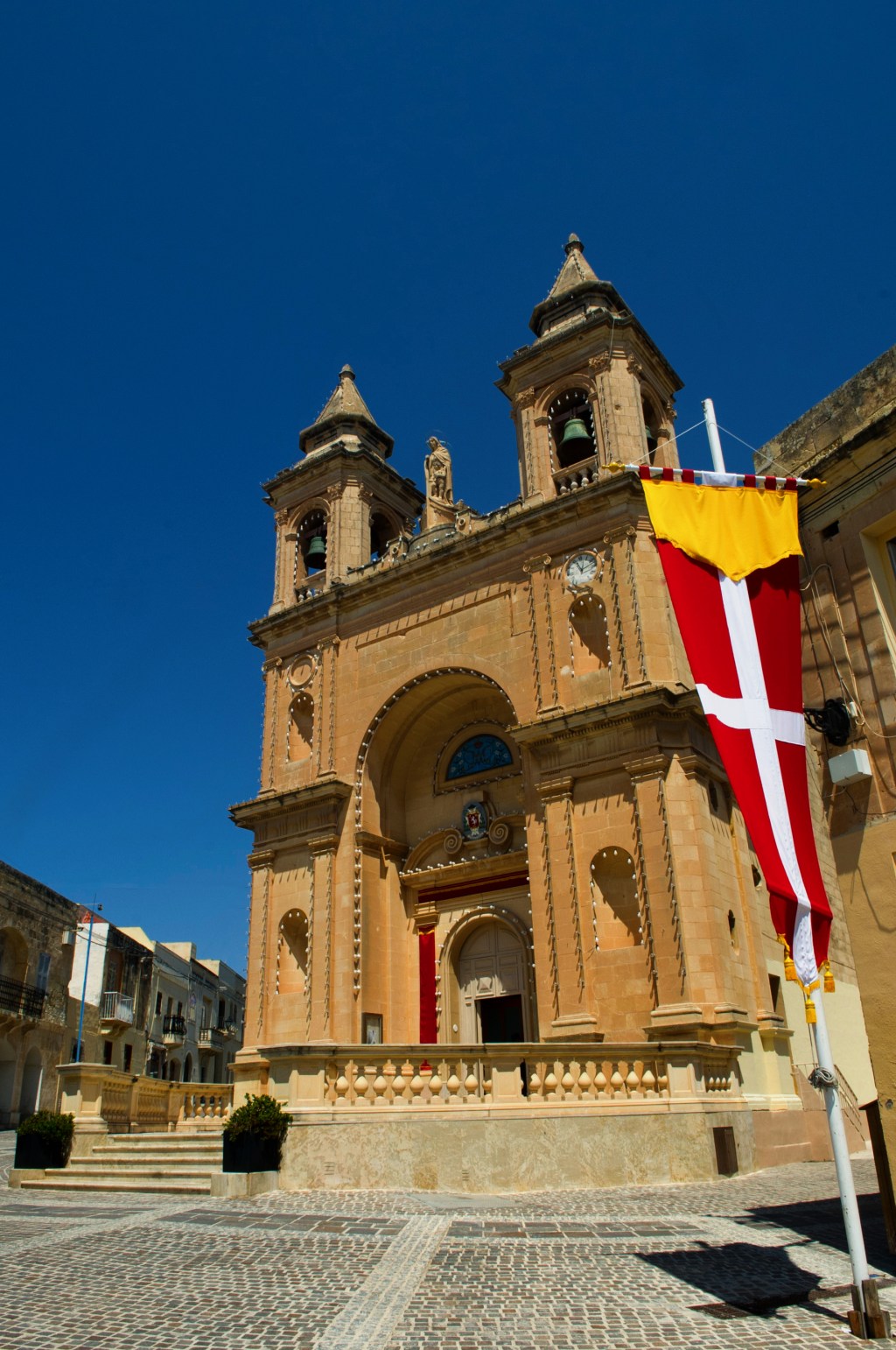
Marchioness Rosalia Apap Viani Testaferrata offered to cover half the expenses, on condition that the church would be dedicated to Our Lady of the Rosary of Pompeii. Lady Rosalia was a young Italian woman, married (1874) to Marquis Ġużeppi Apap Testaferrata. She had a burning devotion to Our Lady of the Rosary of Pompeii which was infused by a miracle she had received a few years before.
In 1885, the Marchioness was travelling by sea along the west coast of Italy, when they encountered a very violent storm. Rosalia invoked the help of Lady of Pompeii through the special prayer (Supplika) being recited at the time and even today. The ship and all on board were saved. They managed to enter the port of Bastia on the north-east of the island of Corsica, just opposite the island of Elba. As soon as they entered harbour, the storm abated for about half an hour giving them enough time to go ashore. Once they were all safe on land the storm spewed even more violently. In fact, the ship had to remain in the harbour for another three days. Her offer to cover half the expenses to build the church was a gesture of thanksgiving to Our Lady of Pompeii.
Things couldn’t be better, as it happened that Bishop Pace, too, was a convinced devotee of Our Lady of Pompeii. Moreover, it was his wish to have a Parish in our Islands dedicated to Our Lady of the Rosary of Pompeii. Pace’s next step was to share all these deeds and desires with the villagers. Now, it was Marsaxlokk’s residents’ turn to make a decision. They gathered in a fishing warehouse and discussed Lady Rosalia’s offer, the Bishop’s wish, and most importantly the great devotion to Our Lady of Pompeii. A few suggested that Saint Andrew should be their Patron Saint, being the Patron Saint of Fishermen. Others mentioned Our Lady of Mount Carmel. However, the majority embraced Our Lady of Pompeii as their Patroness. After some time, they reached a unanimous decision – the new church would be dedicated to Our Lady of Pompeii.
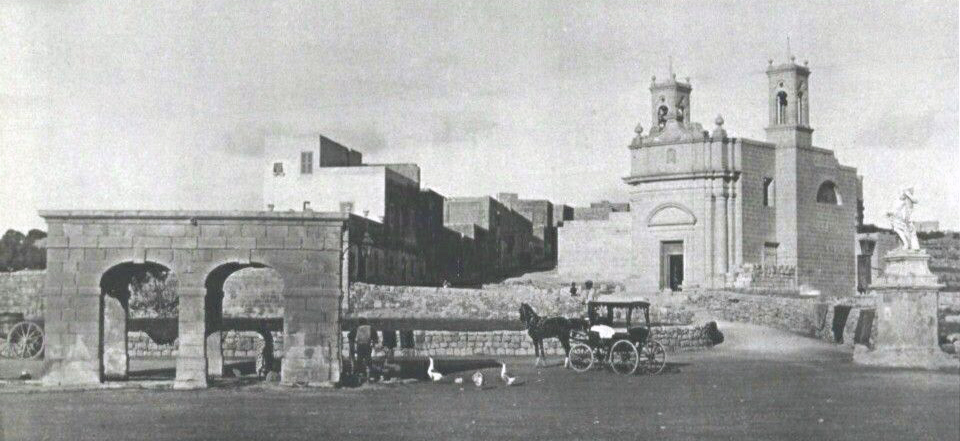
On December 7, 1890, Mgr. Pace, accompanied by all members of the Żejtun clergy and by two Canons of the Cathedral Chapter, led a solemn procession from the privately-owned chapel dedicated to Saint Peter the Martyr to the site where he laid and blessed the foundation stone of the new church dedicated to Our Lady of the Rosary of Pompeii. The ceremony was attended by a large crowd who came from all over Malta. So great was the enthusiasm of the inhabitants of Marsaxlokk to have their own church, that the building was completed in 1892, within two years of the laying of the foundation stone – another sign of Divine Providence, flowing through the financial help of the Marchioness, the Bishop (who aided financially too) and many donations of various other benefactors.
The church was consecrated September 25, 1892, and became a Parish on January 11, 1897.The first christening was performed November 22, 1882, and it was only proper to name the child Rosaria after Our Lady of the Rosary. The first church was not the huge edifice standing today. In the first half of the 20th century the church underwent various enlargement and modification projects. For instance, it was enlarged altering the shape to that of a Latin cross, with the addition of east end transepts and a choir; a new west front was constructed; belltowers were erected; and it was finally crowned with a dome.
On May 8, 2017 Archbishop Charles Jude Scicluna elevated the Parish to a Marian Sanctuary, and unveiled and blessed its new titular painting, by the Maltese artist Manuel Farrugia. Since 1963, the sanctuary is the venue of a national pilgrimage, led by the Archbishop of Malta, held every year on May 8, the feast of Our Lady of the Rosary of Pompeii.
It is one of the curiosities of history that the church of Our Lady of the Rosary of Pompeii in Marsaxlokk was opened and consecrated only a year after the original church of Our Lady of the Rosary in Pompeii was consecrated, that is on May 7, 1891!
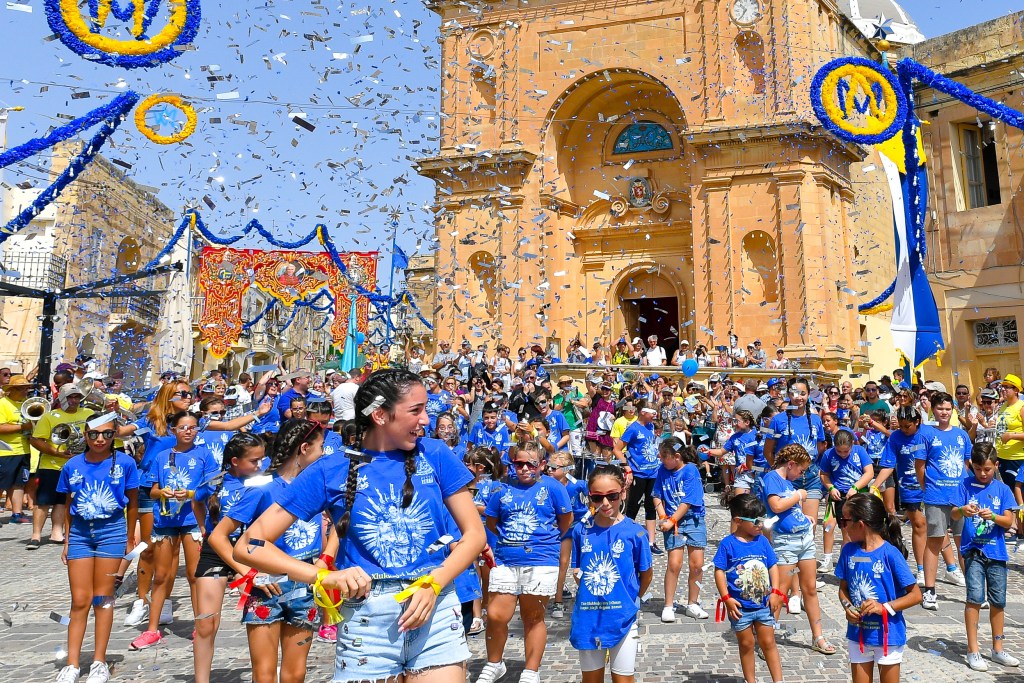
Our Lady of the Rosary of Pompeii
Throughout the centuries, Pompeii has experienced tragedies and miserable times, but in more recent years the misfortunes were transformed into triumphs of Our Lady of the Rosary. The instrument she used for her conquest was a “dodgy” figure, Bartolo Longo [1841-1926]. An attorney from Naples, Bartolo was introduced to Satanism during his college days. After becoming a priest of the church of Satan, he unceasingly and publicly ridiculed Catholicism. A friend of Longo, Vincente Pepe, succeeded in placing Bartolo in the care of a Dominican friar, who helped him withdraw from the sect, and brought him back to God. Bartolo decided to make reparation by joining a group of people who cared for the poor and the sick.
A member of this group, Countess di Fusco, commissioned Bartolo to collect rents form tenants in her properties. While doing so, he noticed the desolation of the city and the spiritual poverty of the people. One day in 1872, while he paused in the fields near Pompeii, reflecting on his previous life as a satanist, he recalled his Dominican spiritual father quoting the Blessed Virgin Mary:
“One who propagates my Rosary shall be saved.”
Falling to his knees, he exclaimed:
“If your words are true that he who propagates your Rosary will be saved, I shall reach salvation because I shall not leave this earth without propagating your Rosary.”
Like an answer to his promise, the bell of the parish church of Pompeii pealed for the Angelus. This was a clear sign from the Blessed Mother – without delay he had to start propagating devotion to the Holy Rosary.
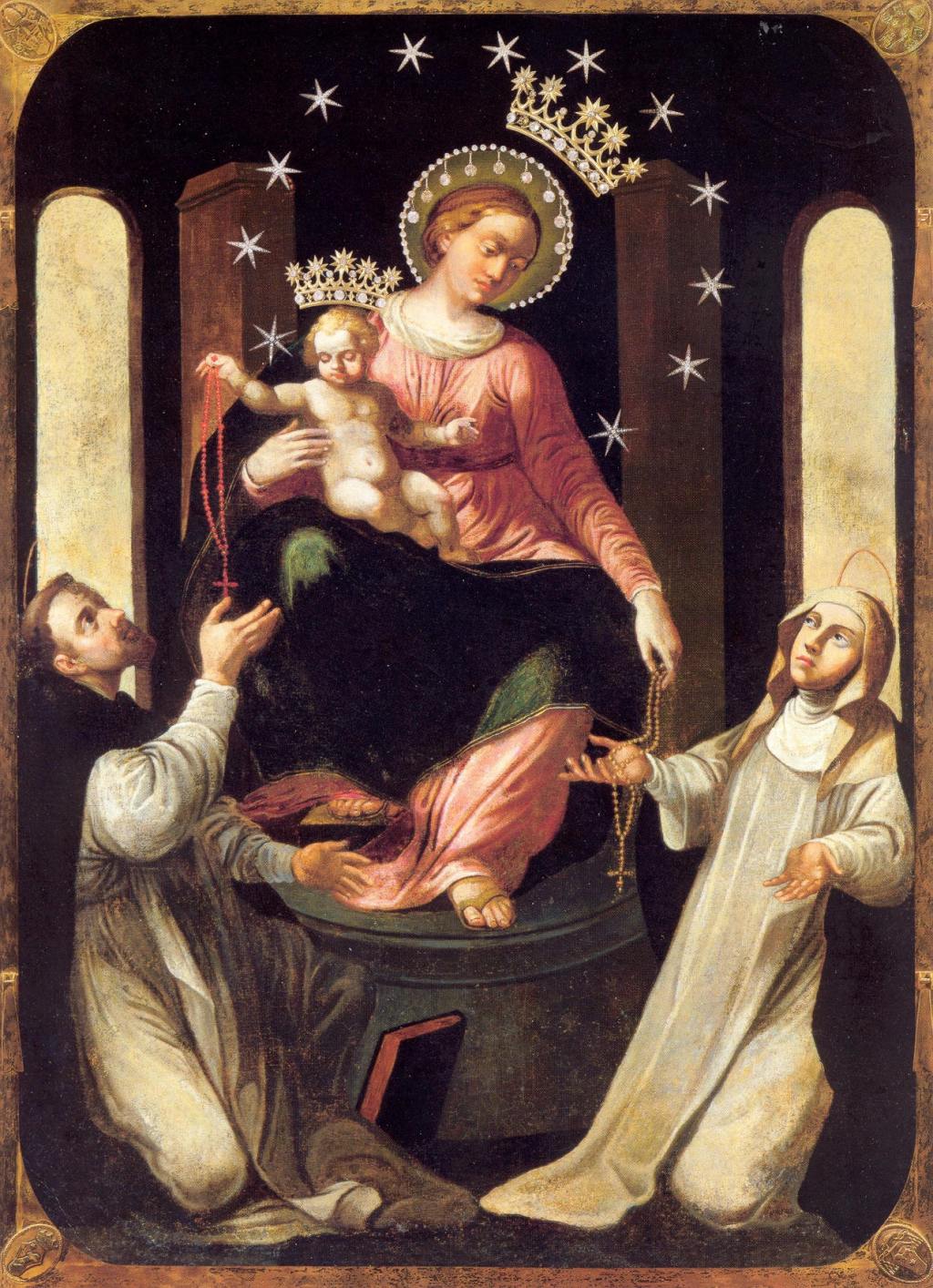
As part of his mission, he planned to exhibit a painting of Our Lady. A nun, Mother Concetta, was willing to donate a painting, but Bartolo was quite irked when he saw the “piece.” It was in a pitiful condition and full of flaws, however, due to his commitment he accepted it. Mother Concetta articulated, “Take it with you; you will see that the Blessed Mother will use this painting to work many miracles.” Her words proved to be prophetic. The painting arrived in Pompeii on November 13, 1875, and between 1876 and 1965 underwent three restorations. As a fitting shrine for Our Lady, Bartolo commissioned the building of a magnificent church. Its construction was funded both by the pennies of the poor and donations of rich benefactors.
3 Outstanding miracles
While it was being built, three outstanding miracles took place. The first involved a child, suffering from epileptic fits. The relatives of the child made a vow to help in the building of the church, should she be healed. The cure arrived on the day the picture was exposed for veneration. Two doctors certified under oath that this was nothing less than miraculous. A young woman, who was dying in agony, was also cured when similar vows were made. When the cornerstone of the new church was laid, May 8, 1876, Fr. Anthony Varone, who was dying of a gangrenous condition, was likewise healed. He celebrated Mass the following morning and, in his homily, on the feast of the Holy Rosary, pronounced his miraculous cure.
A month after the cornerstone was laid, another miracle took place when a woman, in the last stages of consumption, was persuaded to make certain promises to Our Lady of Pompeii. On June 8, while in bed, she saw a vision of the picture of Our Lady of Pompeii – although she had never actually seen the picture. As she gazed at it, Our Lady appeared to cast a ribbon with a writing: “The Virgin of Pompeii grants your request, Giovannina Muta.” She was completely cured. Many other graces were granted in Pompeii too numerous to mention here. In 1934, Pope Pius XI, ordered the construction of a new basilica that was completed in 1939. The tombs of Bartolo Longo and his wife are found in the crypt of the Sanctuary.
The promise of the Blessed Mother that “One who propagates my Rosary shall be saved” was sealed at the ceremony of Bartolo Longo’s beatification (October 26, 1980), when Pope John Paul II affirmed the salvation his soul.
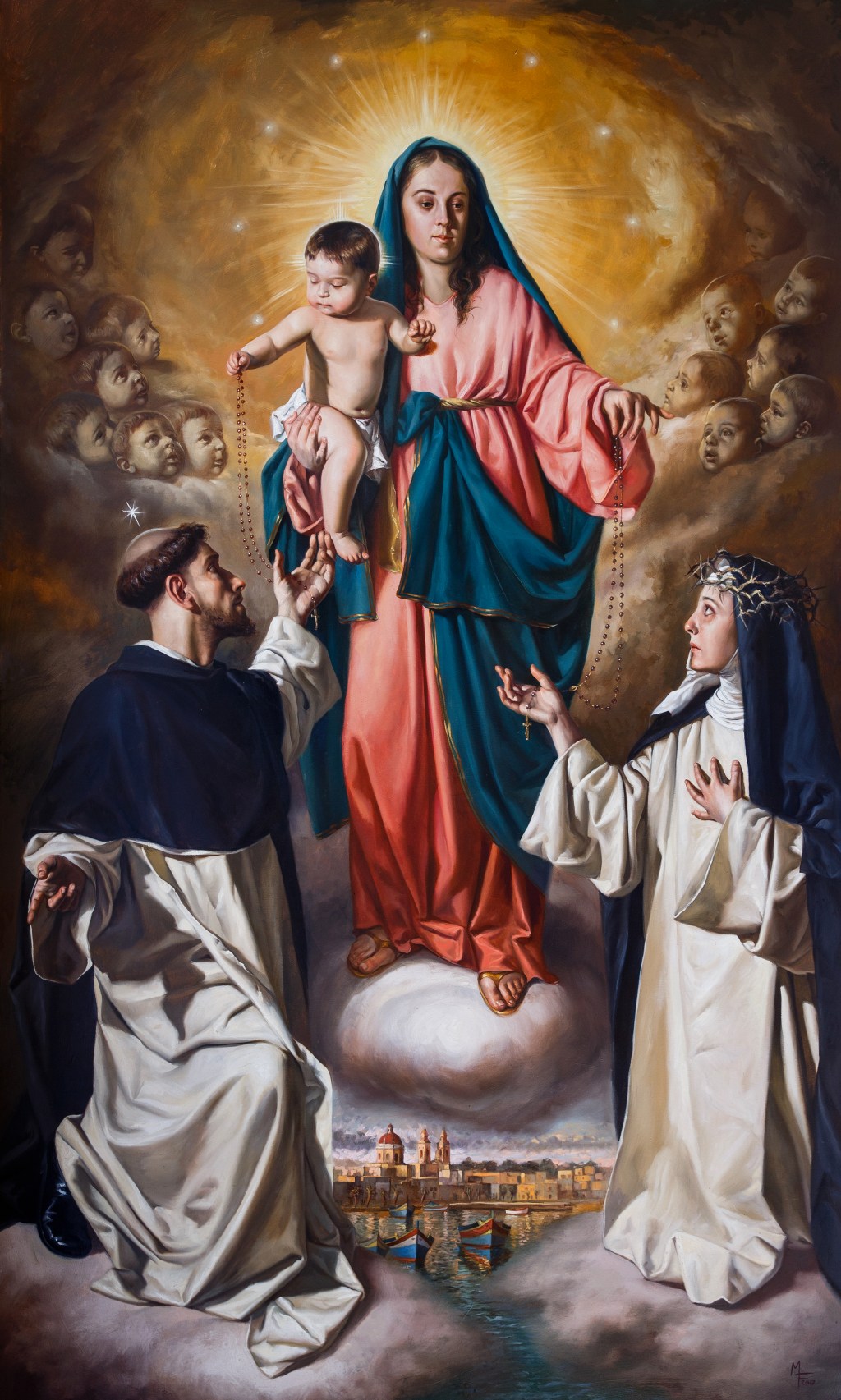
I would like to heartfully thank Fr. George Spiteri, parish priest of the Marsaxlokk Parish of Our Lady of the Rosary of Pompeii, and Horace Gauci, an interested and very learnt parishioner on Marsaxlokk and its parish, who provided me with information, photographs and assistance to write this article. I also thank Ian Noel Pace, of the Archdiocese of Malta for providing photographs, and for his unending support and patience.
References
Abela J. Marsaxlokk a hundred Years Ago. On the Occasion of the Erection of Marsaxlokk as an Independent Parish, 1897. Kumitat Festi Centinarji Marsaxlokk. Malta 1997
Bonanno A. Malta: Phoenician, Punic, and Roman. Malta’s Living Heritage. Midsea Books, 2005
Bonanno A. and Vella, N.C. Tas-Silġ, Marsaxlokk (Malta): Archaeological Excavations Conducted by the University of Malta (1996-2005). Peeters, 2015
Borg M. Il-Parroċċa ta’ Marsaxlokk se tiġi ddikjarata bħala Santwarju Marjan (The Parish of Marsaxlokk will be declared a Marian Sanctuary). Newsbook 27th April 2017
Grech, J. L-Istorja ta’ Marsaxlokk – Raba’ Parti (History of Marsaxlokk). Festa Madonna ta’ Pompei Marsaxlokk, 1994. [from University of Malta website]
Grech J. Ghaliex ghazlu lill-Madonna ta’ Pompeij (The reason they chose Our Lady of Pompeii). Mitt Sena Parocca – Festa Madonna ta’ Pompej. August 1997 [from University of Malta website]
Our Lady of the Rosary, Pompeii, Campania, Italy 1875 with Novena. Catholictradition.org
